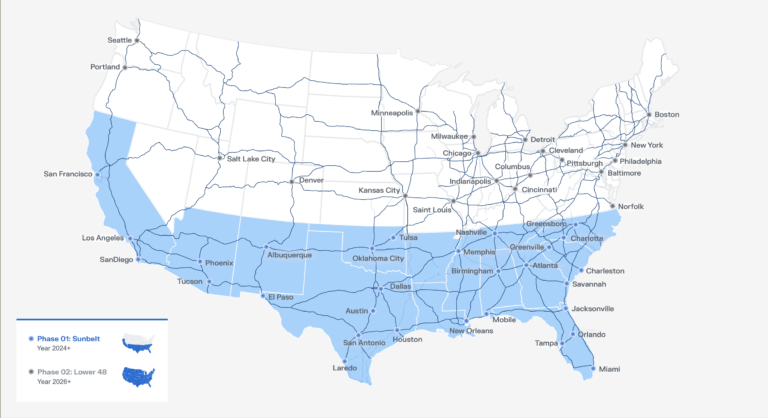Google Cloud’s Amr Awadallah, VP of Developer Relations, and Debanjan Saha, GM of Data Analytics, explain in detail why open source will be increasingly important to your enterprise data and analytics strategies in the new year.

Opportunities never last. That means the coming year is an important time to challenge the status quo, and effect meaningful changes in your enterprise architecture.
getty
For several months, almost every customer meeting we’ve had has included the same pair of pressing issues. The first concerns speed and agility: How can we move faster, executives say, to release software that improves our product offerings, builds customer satisfaction, and helps us work more efficiently? The second, related, issue is about strategic survival: How can we derive better insights from our burgeoning loads of data, then act on that analytics treasure?
If these are the business and technology questions of our time, we’re lucky. They show the enormous opportunity that companies now have, thanks to the rise of cloud computing. The cloud makes it easier to match information technology to business needs, to gather and analyze data, and to quickly act on new opportunities.
That’s why it has brought software developers and analytics professionals closer to solving real business problems, and has led people on the business side to think about using technology without having to worry about infrastructure management.
When businesses can move faster, their data and analytics professionals are happier, more innovative, and able to create higher-value products. With more and better analytic insights from the data teams, businesses can grow customer delight, find new efficiencies, and make new discoveries that potentially enrich the enterprise—sometimes even the world.
The window for change is now
Table of Contents
Opportunities never last. That means the coming year is an important time to challenge the status quo, and effect meaningful changes in your enterprise architecture. Particularly if you’re migrating from on-premises technology to the cloud, transforming your on-premises architecture to be cloud native, or if you’re thinking about how to better coordinate activity between different clouds and your on-prem tech.
Some of how you do that depends on your industry and resources. A critically important dimension of how to think about it and plan, though, is universal.
Use open-source software. Follow open-source practices, like sharing information and contributing to solving big problems that will improve the industry. Find ways to make your resources do more, like using multicloud computing and continuous modeling and training analytics processes. All of these approaches can help you learn cutting-edge business and technology practices, and give you a lot of ideas about where you need to go next.
There are several reasons to use open source. A couple may be familiar, but have become more urgent. Others have surfaced just in the last year, and we’re convinced they will become even more important in 2021. Here are five we’d like to share with you.
1. Portability and the freedom to change providers
It’s well known that open-source software and data formats, as well as APIs, are invaluable for providing choice and freedom. If a customer is unhappy with their vendor’s products or services, they have extra confidence knowing that they can work with another provider. Portability is also important in the event you need to switch providers in order to meet cost or compliance constraints. That’s a kind of business agility that frees the enterprise from feeling locked in and enables broader thinking about future strategies.
As for APIs, they’re how systems never designed to interoperate can still talk to each other. They make it easy for developers to repeatedly and modularly leverage data and functionality for different use cases. APIs are the reason that today’s digital experiences are richer than ever, with more services from more companies seamlessly combining into digital experiences. When enterprises open up their APIs to external partners and co-innovators, incredible new synergies among companies are possible.
Speaking as a vendor committed to open source, we like seeing customers take advantage of this freedom. It means we get to compete every day to create more business value for you. We are in a tough and creative business, so it’s good if we don’t rest on our laurels. Your provider should feel the same. Don’t be fooled by open-source companies that claim to offer you OSS portability, only to find they have added proprietary barriers to their OSS offering. Above all, make sure your data is stored in an open data format that can be easily moved to other systems, otherwise you could potentially get handcuffed to a vendor as your data grows.
Related: Empowering customers and the ecosystem with an open cloud
2. Multicloud and hybrid support
Closely related to the freedom of open source is the capability and power that comes from developing a hybrid or multicloud strategy. Hybrid computing joins your existing on-prem resources to the cloud, and multicloud means you can draw on the data and capabilities you are paying for in more powerful ways than when these things were siloed. Like open source, it also means that you—not your vendor—are in control.
Open-source workloads are, of course, multicloud by default, since they aren’t dependent on multiple types of infrastructure. Combine those two things, and you have more power and choice than ever.
Google Cloud has been at the forefront of the multicloud and hybrid movements with the creation of Anthos. It is an open-source-based, modern application platform that lets you build and run apps anywhere—simply, flexibly, and securely. Anthos builds on the open-source projects Kubernetes, Istio, and Knative, giving you the freedom to modernize in any place, at any time, and at your own pace. Kubernetes has made its way into other OSS communities as well as making other projects, like Apache Spark, multicloud and hybrid.
Related: Hear from Major League Baseball (MLB) about how they deployed Anthos in their stadiums.
3. The ability to unlock community innovation
Open-source communities extend beyond your company to a much larger world of software engineers collaborating to address the same problems. That means there are a lot more eyeballs and a lot more brains on the case. Innovations that improve the quality of the software are shared, allowing you to take advantage of those innovations while freeing up your people to do more value-added work and focus on your customers even more.
By participating in and contributing to open source, you have access to expertise and perspectives across industries and geographies, which allows your enterprise to innovate outside of the confines of your preconceived notions of industry standards. For example, taking cutting-edge OSS natural language processing, like BERT, that was originally intended for Google Search and applying it to equity research. Open source has the potential to significantly lower the barrier to advanced analytics by allowing your team to quickly pull from open source and deploy the code.
4. Smarter analytics, faster
In the past few years and especially this year, analytics and the acceleration of analytics have become business-critical practices. That takes analytics out of the traditional lab-based, specialty style of production and into something that’s more agile, automated, and reliable. This will continue to become a bigger topic in your industry, but it’s time to start learning about it now.
The new process is called CM/CT, which stands for continuous modeling/continuous training. It’s a way of analyzing and acting on insights faster by reorganizing how software and analytics teams work together. Think of it as the data equivalent of the way software development in the past decade went from slow, project-based production to something faster and easier to better respond to change. By building your analytics environment with open-source software, like Jupyter Notebook and TensorFlow, you can quickly take advantage of these analytical advancements.
5. Creative outlet for engineering and analytics talent
If open source is good for developers, it also provides great lessons for managers in a world that’s increasingly online, distributed, and continuous. By studying open-source projects, you can see how and where new ideas are bubbling up. You can get insights into what excites and motivates creative people. You can see information and innovation moving freely. You can spot and hire the talent you need, and give your own team a rewarding outlet for their creativity by allowing them to become active members of the open-source community.
We’re confident these five reasons to use open source will be increasingly important to your enterprise data and analytics strategies throughout 2021. As we all contemplate a rapidly changing world, it’s good to have tools and guideposts to help us build even better products, processes, analytics, and teams. That’s where open source, hybrid, and multicloud can make a big difference. Whatever the future holds, the freedom to build on your potential will be invaluable.
Move forward with your goals of modernizing applications for the cloud era. Get the free ebook, “Anthos under the hood: The technologies that will transform enterprise applications,” for an in-depth look at each layer of the Anthos platform and how to leverage its capabilities.
Below: In this Anthos 101 video, you’ll learn exactly what Anthos is, and how it helps enterprises manage their applications.







